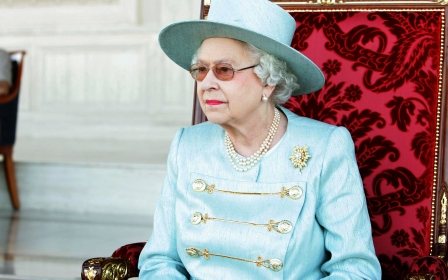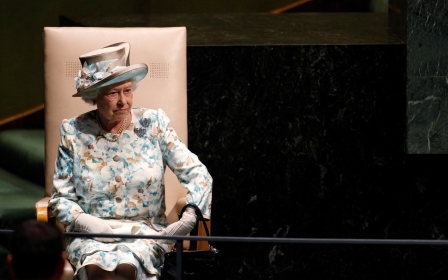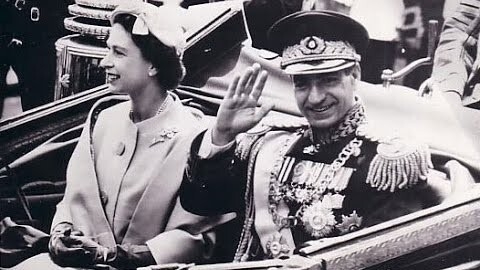
In pictures: Queen Elizabeth II and the Middle East
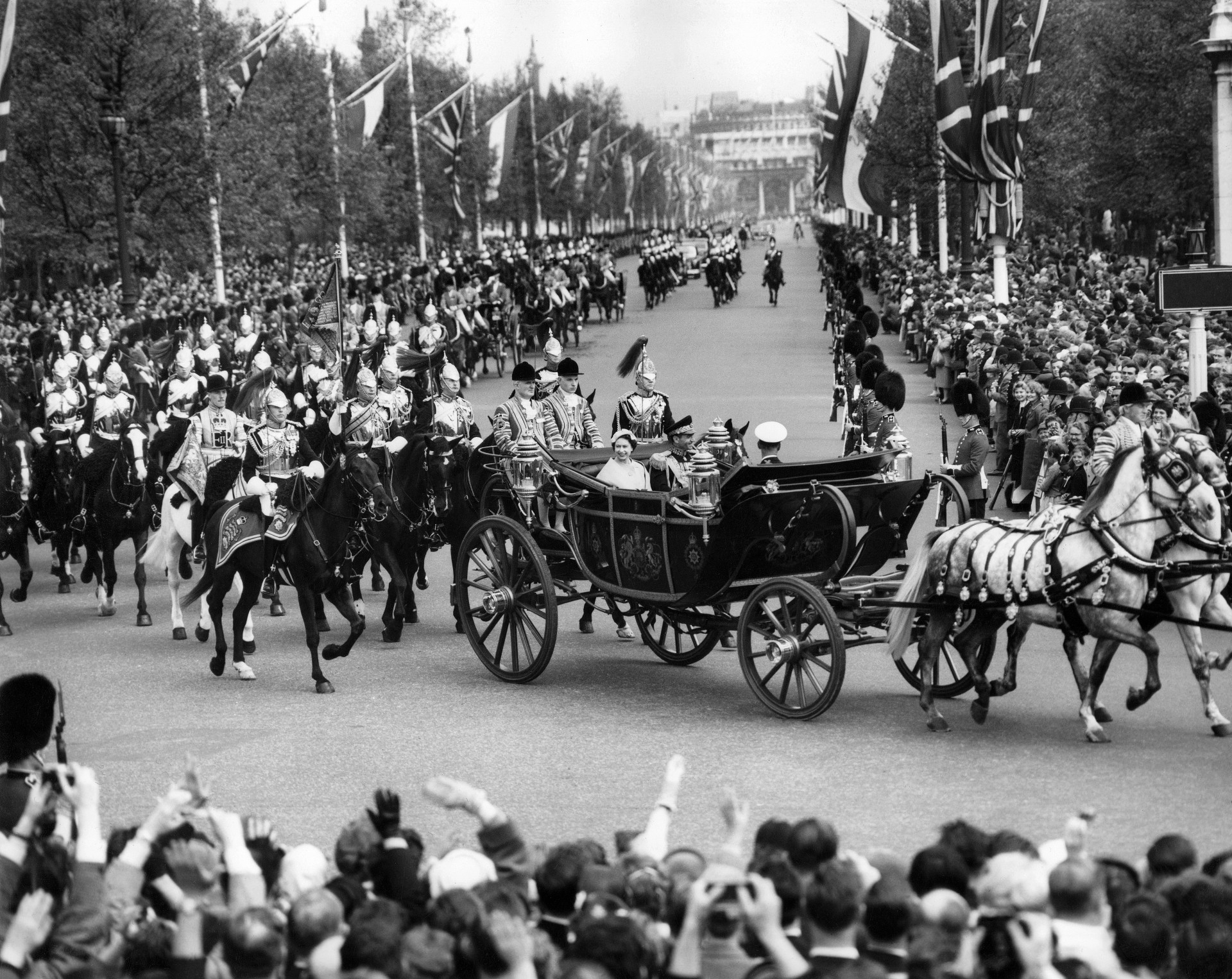
Londoners crowd around Buckingham Palace as the shah of Iran, Mohammad Reza Pahlavi, arrives at the royal residence with the queen and the Duke of Edinburgh in an open carriage on 5 May 1959 (AFP).
Pahlavi came to power in 1953 after a CIA and MI6-backed coup, serving the geopolitical interests of Britain and the US, toppled the Iranian government led by former Prime Minister Mohammad Mosaddegh.

Elizabeth II and Prince Philip pose with Shah Pahlavi and his wife, Farah Pahlavi, in Tehran during their state visit to Iran in March 1961 (AFP).
The queen inadvertently played a role in the 1953 coup, according to 2020 documentary The Queen and the Coup.
The film, citing US documents, claims that Pahlavi was considering fleeing Tehran, when a British government message stating "Queen Elizabeth" had expressed concern and "strong hope we can find some means of dissuading him from leaving the country".
Washington passed the message to Pahlavi, who performed a U-turn. But neither the US nor the shah knew the British had actually been referring to the ship the RMS Queen Elizabeth - and the monarch herself had no role whatsoever.
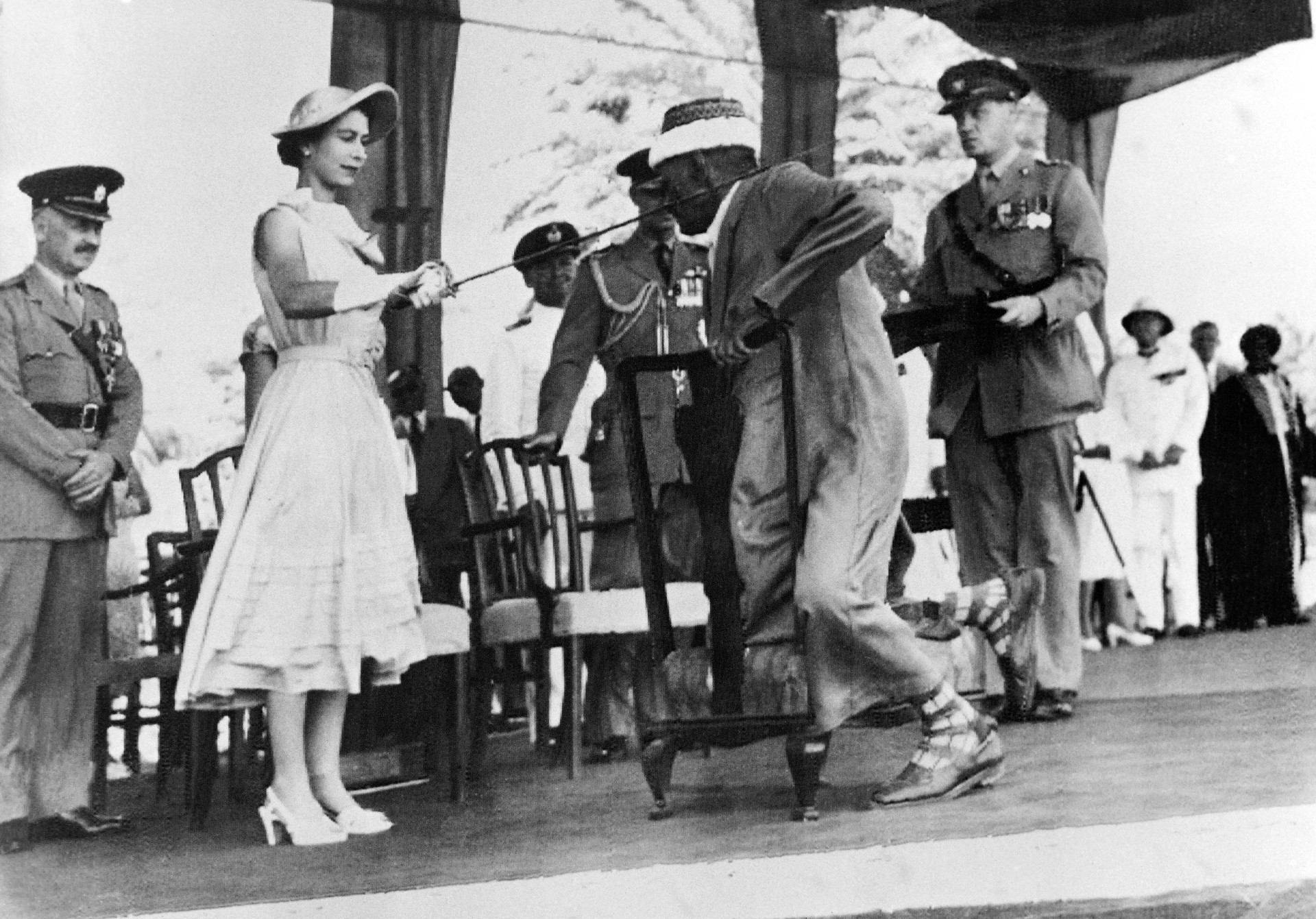
Yemen Councillor Sayyid Abubakr bin Shaikh Alkaff kneels before the queen to be knighted during a visit to Aden on 29 April 1954 (AFP).
The visit came just two years into the monarch's reign and was part of a six-month tour of the Commonwealth. At the time, south Yemen was a British protectorate.
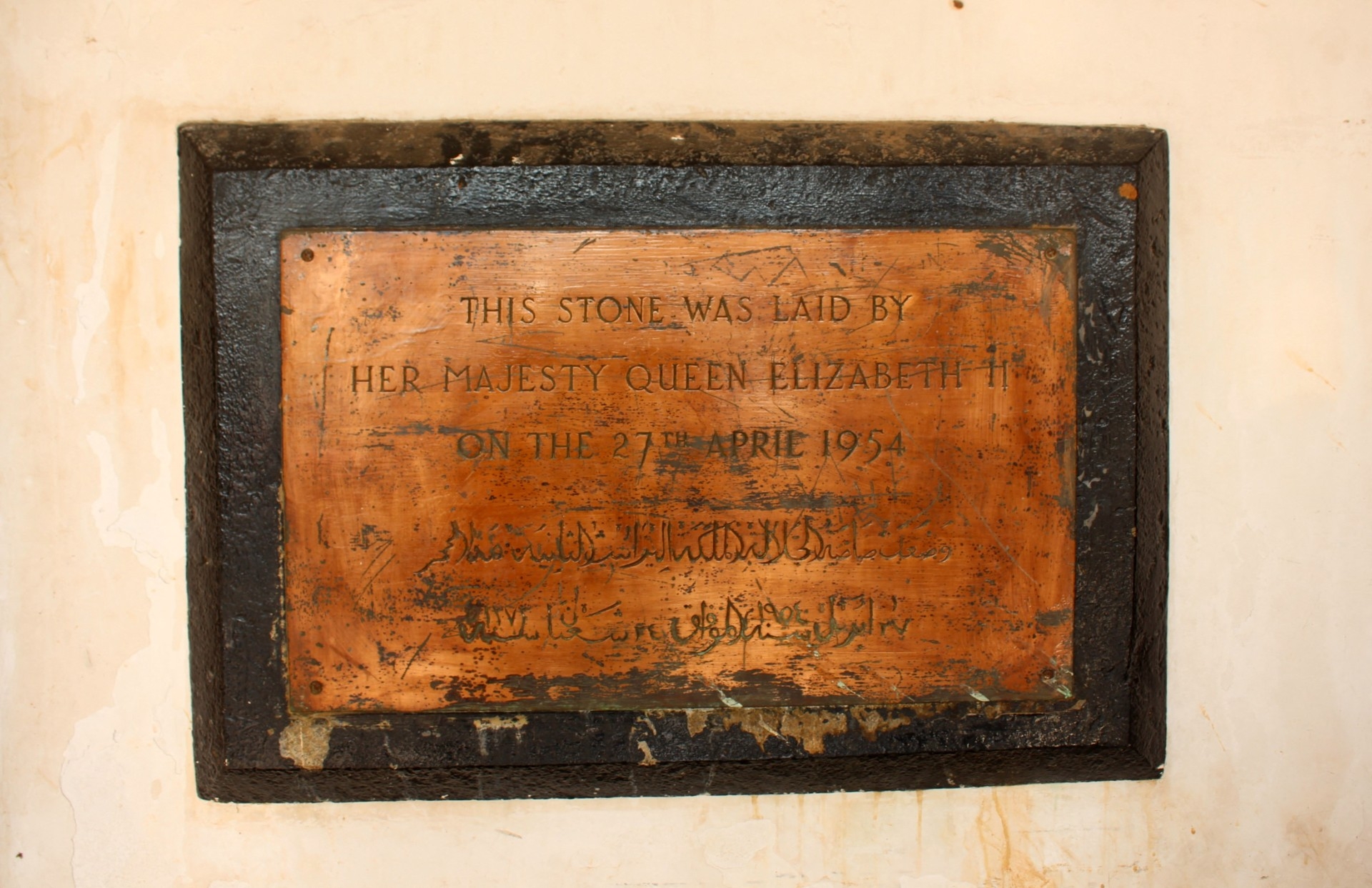
A bronze plaque, pictured in March this year, marks the date on which the queen laid the founding stone at the Al-Joumhouria hospital in the Khor Maksar area of Yemen's southern city of Aden (AFP).
The clinic remains open today.
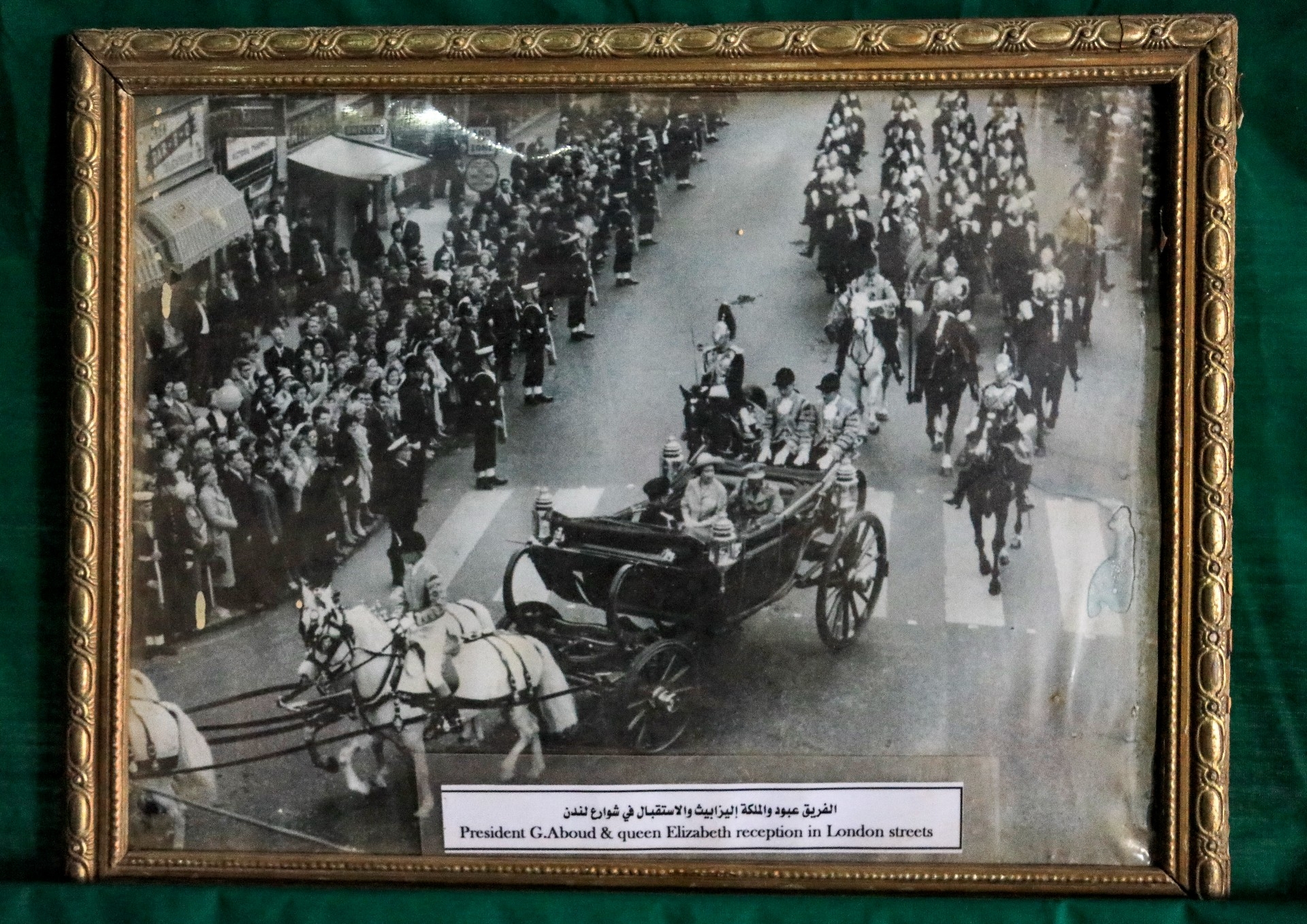
This framed photograph, on display at the Sudanese armed forces general command in the capital, Khartoum, shows Elizabeth II riding in a horse-drawn carriage with Sudan's late president, General Ibrahim Abboud, during his visit to London in 1964 (AFP).
The queen visited Sudan in February 1965, nine years after the African country gained independence from British colonial rule.
More than 500,000 residents of towns near Khartoum and Omdurman lined the streets, according to authorities, waving flags and placards.
Elizabeth and Prince Phillip headed to the races during the trip, where they watched a competition won by a horse named Uhuru, and saw 15 camels race two and a half miles.
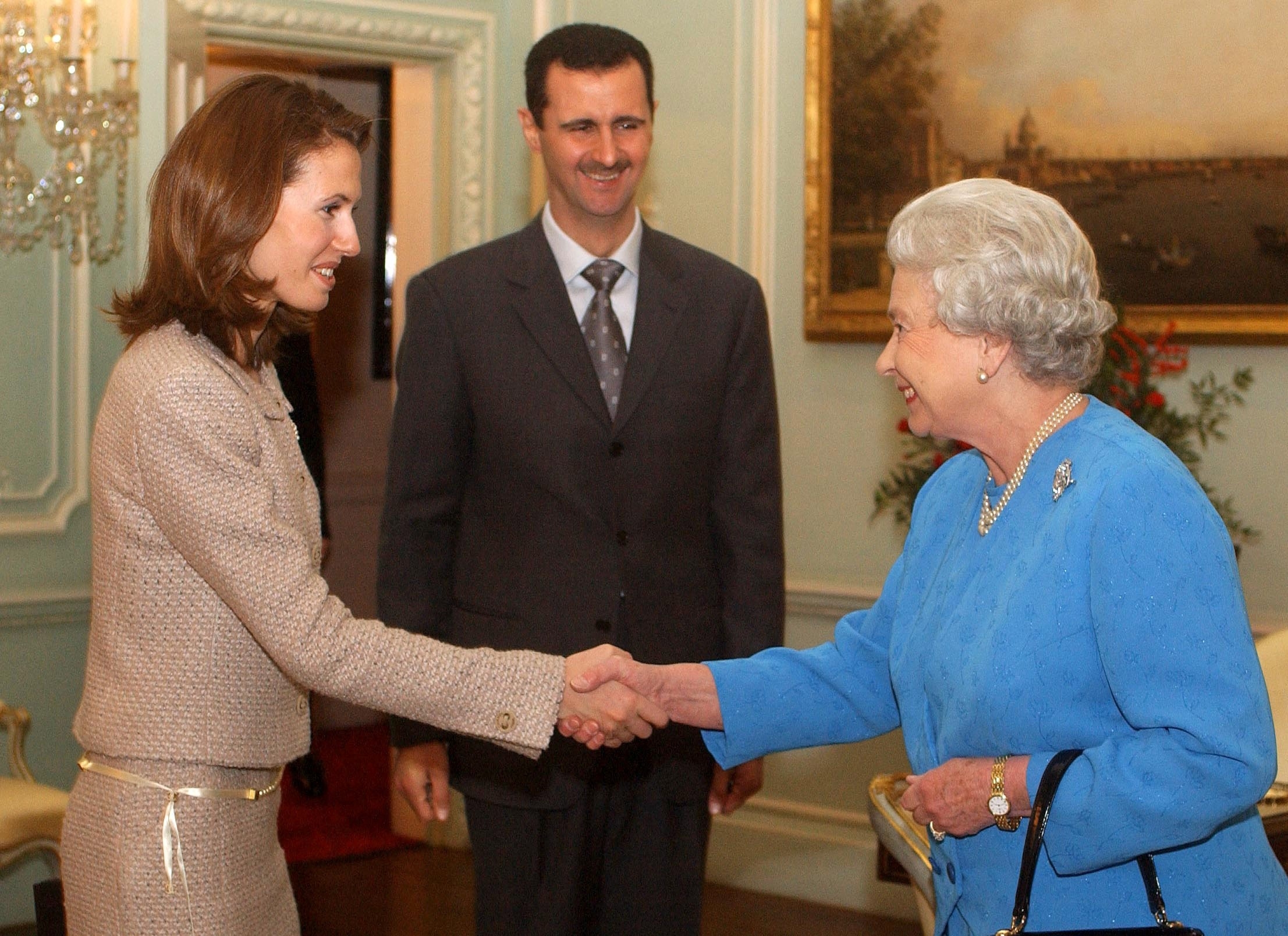
In 2002, President Bashar al-Assad became the first Syrian leader to officially visit Britain, during which he met the queen at Buckingham Palace, alongside his wife Asma (AFP).
Nine years later, Assad would go on to become an international pariah after his brutal crackdown on peaceful Syrian protesters in 2011 sparked the civil war which has claimed the lives of more than 400,000 people and displaced millions more.
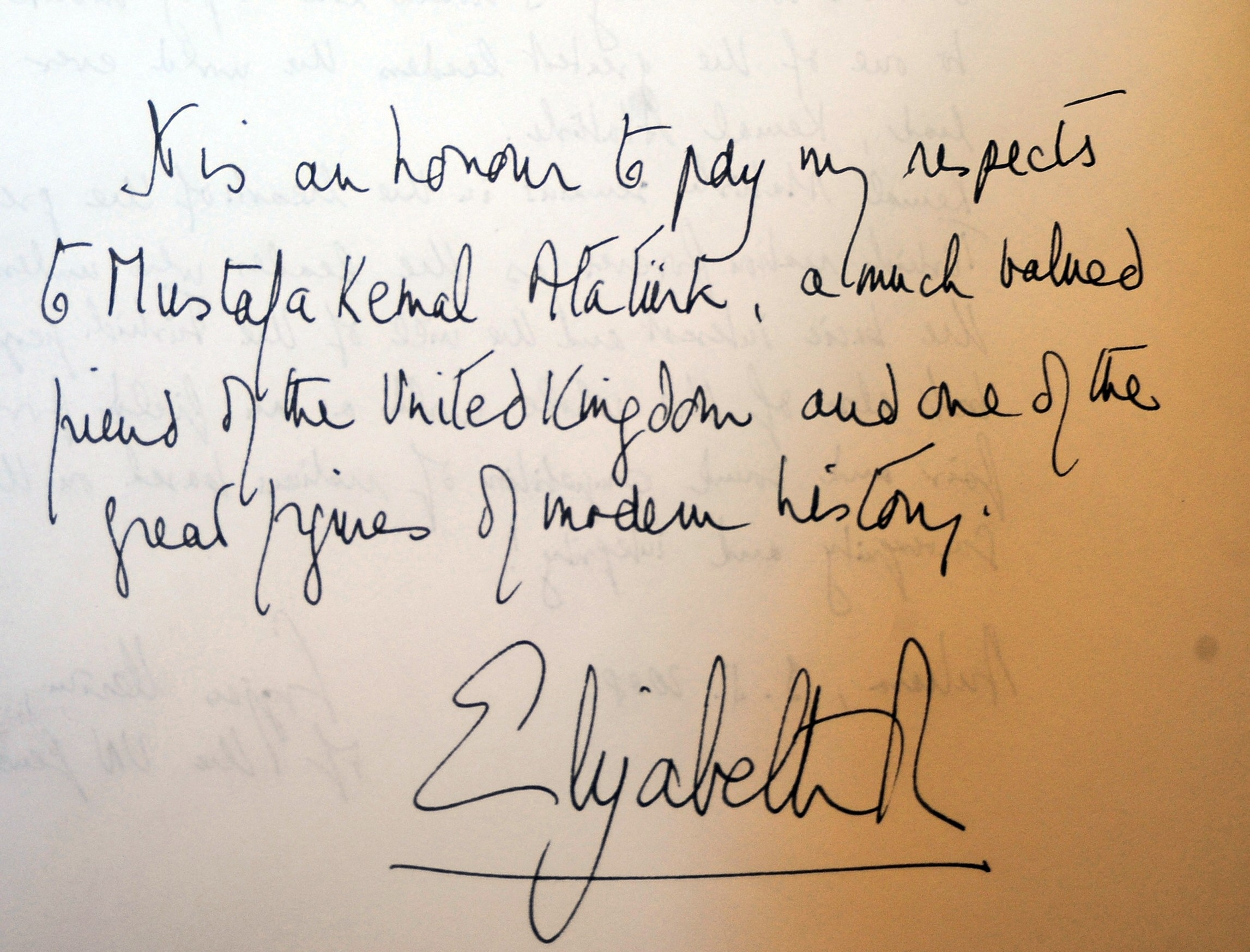
The queen made two visits to Turkey, in 1971, and more recently in 2008 (AFP).
During the second trip, she visited the capital Ankara, as well as Istanbul and Bursa. In the capital, she toured the mausoleum of Turkey's founder, Mustafa Kemal Ataturk, where she wrote a note paying respect to his impact on modern history.
The trip was seen at the time as a symbol of Britain's support for Turkish membership of the European Union - a notion which was later used by right-wing British activists as a reason for withdrawal from the EU.
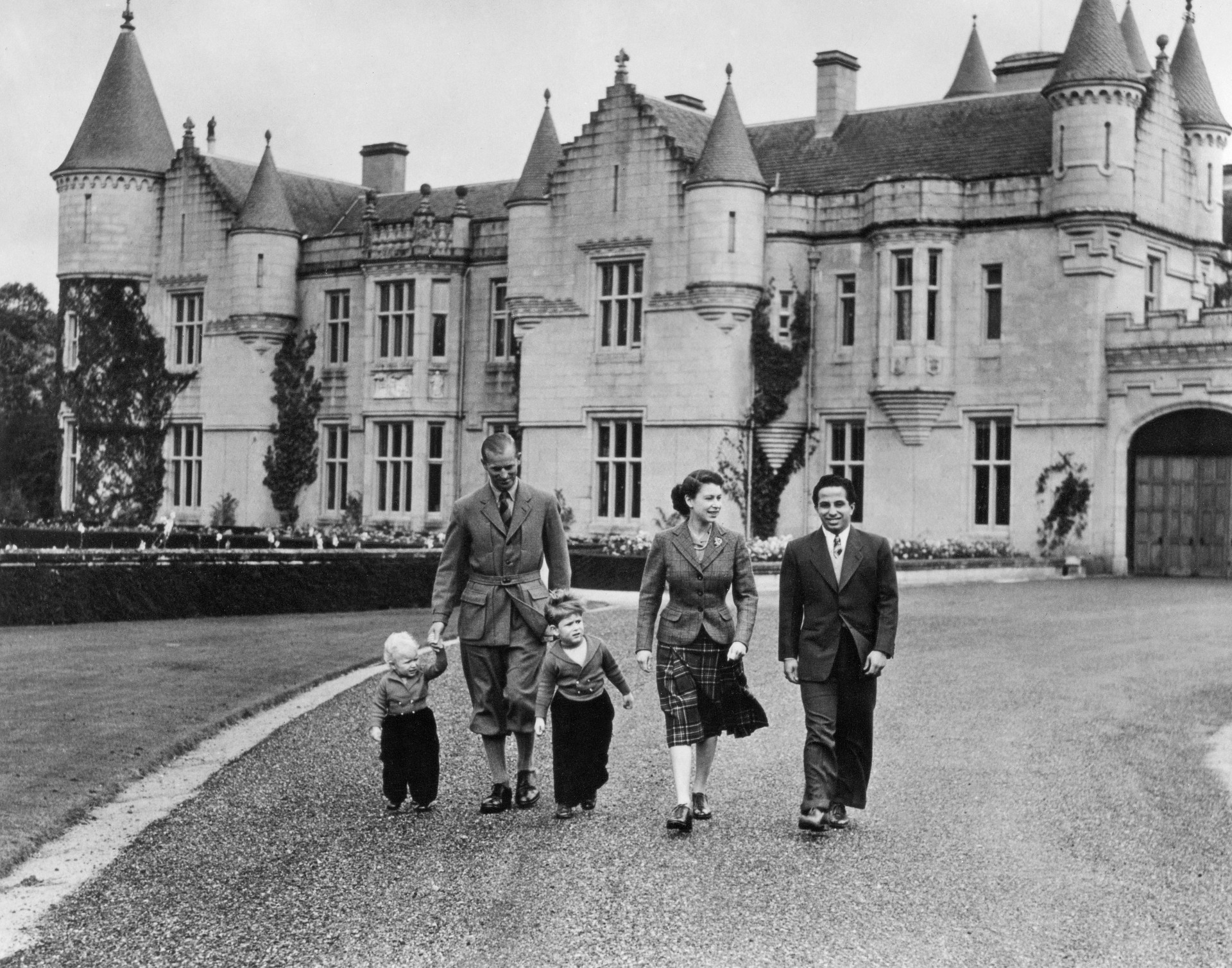
A picture taken on 26 September 1952 in Balmoral shows Queen Elizabeth II walking with her daughter, Princess Anne, as well as Prince Philip and King Faisal II of Iraq (AFP).
Faisal II was the third and final monarch of the short-lived Hashemite kingdom of Iraq, which came about following the defeat of the Ottoman Empire in the First World War and a decade of British administration between 1921 and 1932.
Six years after this photo was taken, in 1958, Faisal II was overthrown during a military coup known as the 14 July Revolution and executed along with several members of his family.

King Hussein of Jordan and his wife Queen Dina on honeymoon in Great Britain pose together with Queen Elizabeth, Prince Philip, Prince Charles and Princess Anne on 19 June 1955 at Windsor Castle (AFP).
Hussein was the third ruler of the Hashemite kingdom of Jordan. Unlike his relative, Faisal II in Iraq, he would go on to be one of the longest reigning monarchs in the Middle East, ruling Jordan from 1952 until his death in 1999.
The Sharifian Solution, which was concocted by the British government after the First World War, proposed that three sons of Sharif Hussein - the then-leader of the Hashim clan believed to descend directly from the Prophet Muhammad - would rule over Syria, Iraq and large swathes of the Arabian peninsula.
The Hashemite kingdom of Jordan is the only branch of the family that remains in power today.

The queen has met five successive kings of Saudi Arabia: Faisal, Khalid, Fahd, Abdullah (pictured, AFP) and Salman.
She met King Khalid during her only state visit to the Gulf kingdom in 1979, during which he gifted her a necklace that was later frequently worn by Princess Diana.
During King Abdullah's visit to the royal Scottish estate, Balmoral, in 2003, Elizabeth gave the Saudi royal a scare after driving him around in her Land Rover, according to former UK ambassador to Saudi Arabia Sherard Cowper-Coles.
The queen accelerated the vehicle along narrow roads while continuing to chat away with Abdullah. The crown prince asked his translator to tell the queen to "slow down and concentrate on the road ahead". At the time, women were not allowed to drive in Saudi Arabia.
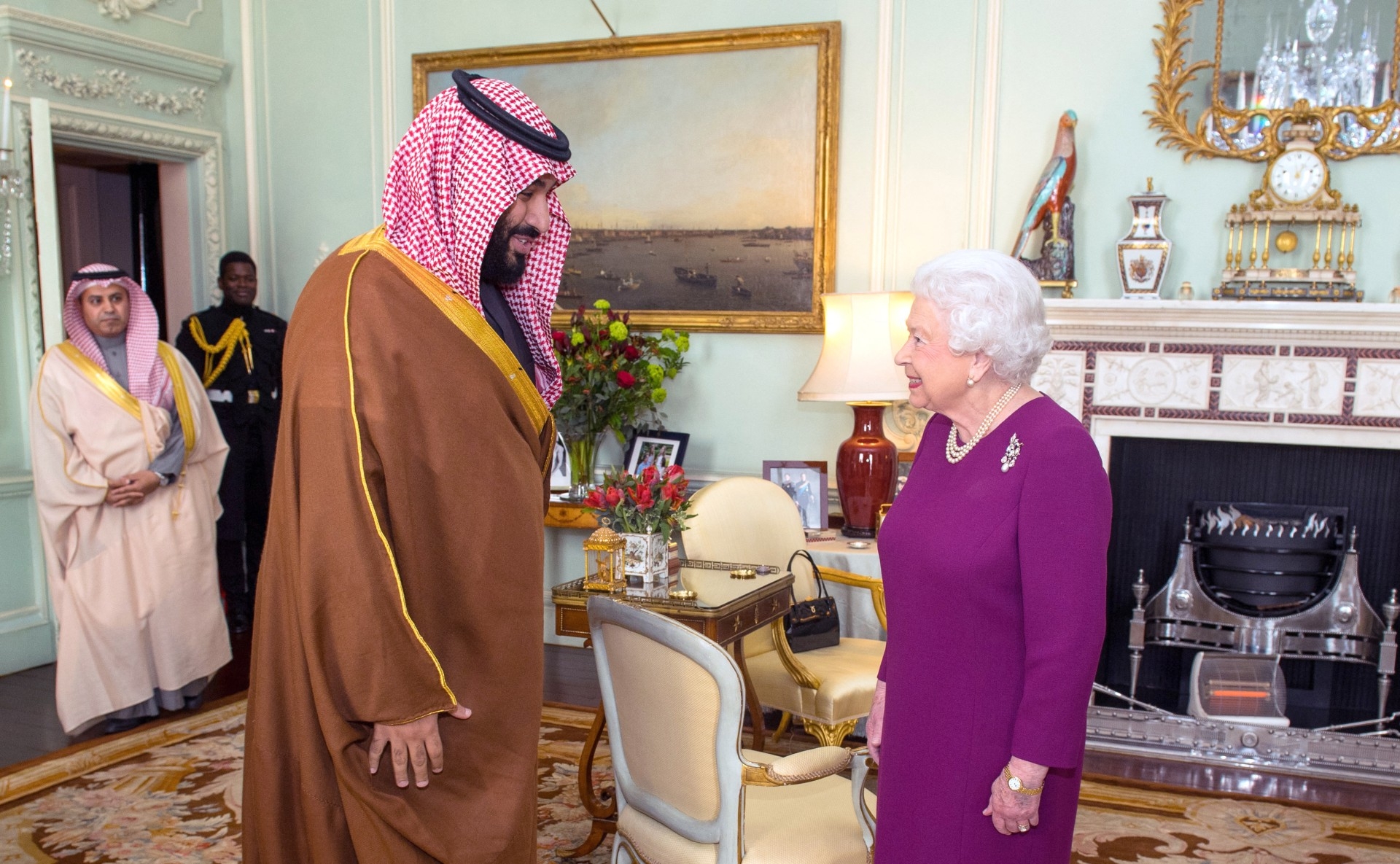
It wouldn't be the only time Elizabeth would meet a Saudi crown prince acting as a de facto ruler of the country - she would go on to meet Mohammed bin Salman during his visit to the UK in 2018 (AFP).
The crown prince has since been accused by the US government of being directly involved in the murder of Saudi journalist Jamal Khashoggi at the Saudi consulate in Istanbul in October 2018.

The Queen visited a children's ward at the Mustapha Hospital in Algiers, during an official state visit to Algeria on 25 October 1980 (Royal Collection Trust).
The youths were survivors of the El Asnam earthquake which took place just two weeks earlier, claiming the lives of up to 5,000 people.

On that same trip, she also visited Morocco, in what has since been dubbed "the tour from hell" (British embassy in Morocco).
King Hassan II, the monarch at the time, had survived two assassination attempts and was subsequently prone to caution and sudden changes to his schedule.
As such, the king left the queen "sitting in the sun for most of the afternoon" by herself, according to royal biographer Robert Hardman. At one point, Elizabeth II warned Hassan II after he attempted to reprimand one of her staff members over a perceived problem.

Elizabeth II greets Emir of Dubai Sheikh Mohammed bin Rashid al-Maktoum and his then-wife, Jordan's Princess Haya bint al-Hussein, in the royal box on the second day of the Royal Ascot horse racing meet in Ascot on 15 June 2016 (AFP).
The queen had maintained a long-standing relationship with Sheikh Mohammed, who a British judge ruled was abusing his ex-wife and keeping both his daughters captive after kidnapping them. The two had not been seen together since that court judgement.
Middle East Eye delivers independent and unrivalled coverage and analysis of the Middle East, North Africa and beyond. To learn more about republishing this content and the associated fees, please fill out this form. More about MEE can be found here.


